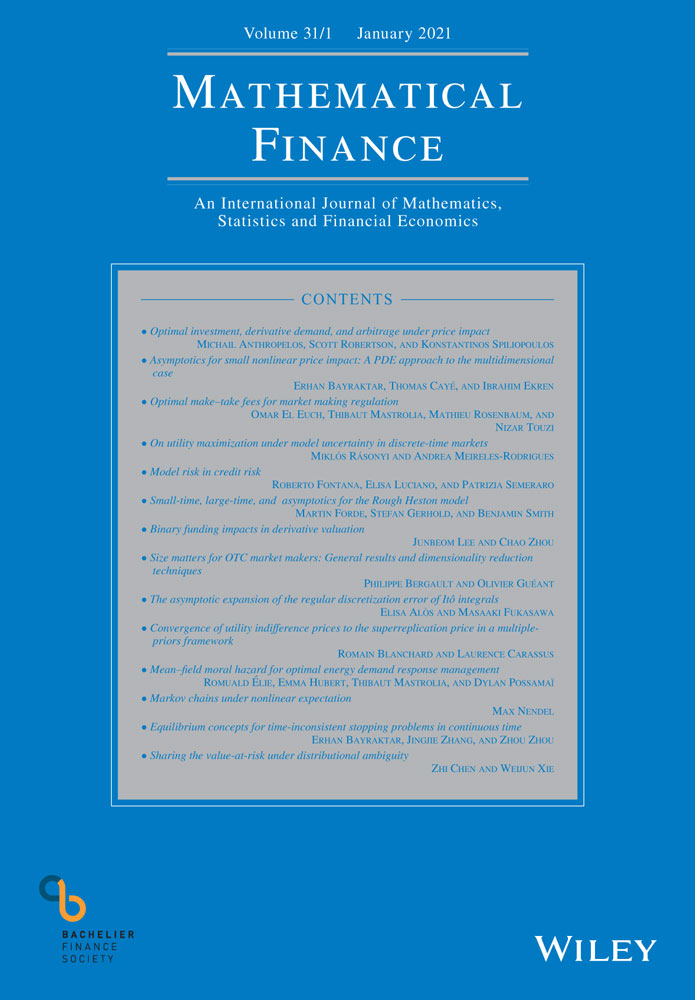Size matters for OTC market makers: General results and dimensionality reduction techniques
Abstract
In most over-the-counter (OTC) markets, a small number of market makers provide liquidity to other market participants. More precisely, for a list of assets, they set prices at which they agree to buy and sell. Market makers face therefore an interesting optimization problem: they need to choose bid and ask prices for making money while mitigating the risk associated with holding inventory in a volatile market. Many market-making models have been proposed in the academic literature, most of them dealing with single-asset market making whereas market makers are usually in charge of a long list of assets. The rare models tackling multiasset market making suffer however from the curse of dimensionality when it comes to the numerical approximation of the optimal quotes. The goal of this paper is to propose a dimensionality reduction technique to address multiasset market making by using a factor model. Moreover, we generalize existing market-making models by the addition of an important feature: the existence of different transaction sizes and the possibility for the market makers in OTC markets to answer different prices to requests with different sizes.
Open Research
DATA AVAILABILITY STATEMENT
Data sharing is not applicable to this paper as no new data were created or analyzed in this study.




